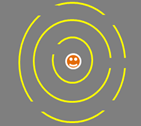Active Playground Markings
Printable version of Active Playground Markings
Use playground markings at recess or lunch, as part of daily PE or even during class time with links to literacy or numeracy. For outdoors, use permanent line markings or temporary chalk markings. For indoors use masking tape or cones.
Activity circuits
Activity Circuits can be created using a range of different lines, pictures, shapes and words to encourage a variety of movements.
Children can enjoy follow the leader games and have fun practicing different movement skills like jumping and hopping.
Blank word boxes could be created so children can write their own movements in with chalk.
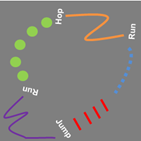
Active Snakes and Ladders
Rules of this traditional game can be changed to make it more active. Students waiting a turn could perform different movements like star jumps or jogging on the spot.
Having numbered and different coloured squares allows for the marking to be used for other activities that can link to numeracy and colour recognition.

Targets
Targets are a great way to encourage children to develop hand-eye coordination and to practice their throwing skill.
Children are able to play individually or as part of a team.
Targets with a range of base/throwing lines allow children to challenge themselves.
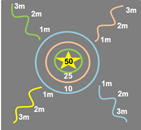
Outdoor Twister
This popular game can be recreated in an outdoor area and also be used for colour recognition activities with younger children.
Adding numbers or symbols to the circles could make it even more versatile.
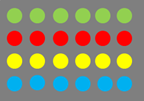
Letters or Numbers
Incorporating letters or numbers into the markings is a great way to add versatility to playground markings as they can be used during class time for literacy or numeracy.
Activity idea: Word Spell
Equipment: Bean bags
Aim: For groups to spell the most words.
How to play:
- Children form groups. Each person in the group has a beanbag.
- One at a time the students in each group throw/toss their bean bags onto the alphabet. The students write down the letters that their beanbags landed on.
- Once all the bean bags have been tossed the groups make as many words as they can with the letters their beanbags landed on within a 2 minute time limit.
- Play for several rounds and see which group can create the most words.
Variations: Make the groups larger to create bigger words. Allow each letter to be used more than once. Set a minimum length for words (e.g., must be 3 or more letters).
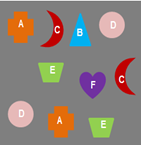
Mazes
Mazes can be used with large numbers of children, divided into a few teams or by individual children.
Students can practice their movement skills like galloping or skipping through participating in relay races through the maze.
Activity idea: Treasure Maze
Equipment:
Bean bags or some items to use as ‘treasure’
Aim:
For the players to collect as many items as possible from the maze and return them to their home base. The player with the most items at the end wins.
How to play:
- Place a number of beanbags/items randomly in the maze.
- If there is only a small group of players and there are enough maze entrances the players can play each other. If the group is larger divide children into teams.
- The players each select an entrance to the maze which becomes their home base.
- On a ‘go’ signal, players make their way through the maze collecting one item of ‘treasure’ and returning it to their home base. If playing individually players go back and forth collecting treasure and dropping it back to home base.
- If playing in a team the game is a relay (when one player returns the next player goes).
- The winning player or team is the player or team with the most amount of treasure when everyone is standing back at their home base.
Rules: Only one item at a time may be collected from the maze and players cannot step over or reach across the lines to collect the items.
